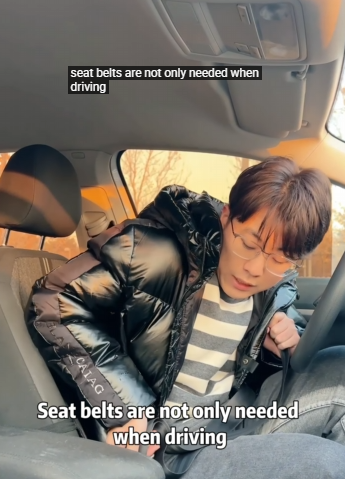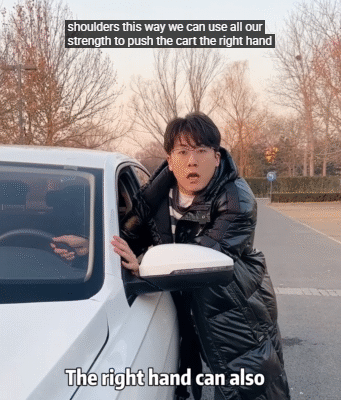
Car safety belts—also known as seat belts—are one of the most essential and life-saving devices in any vehicle. They seem simple, and most of us wear them out of habit or legal obligation. But few people truly understand how powerful this piece of safety equipment is. In fact, there are hidden features and lesser-known facts about car seat belts that could make a life-or-death difference during an accident.
In this article, we’ll reveal three secrets of car safety belts that can save your life. By understanding how your seat belt works and how to use it correctly, you’ll be far more protected in critical situations.
Secret #1: Pre-tensioners and Load Limiters – The Hidden Technology in Your Belt
Most modern vehicles come equipped with something called seat belt pre-tensioners and load limiters—but hardly anyone knows what they are or how they work.
Pre-tensioners activate in a crash. They pull the seat belt tighter, instantly removing the slack and securing you more firmly in your seat. This ensures that your body is held in the optimal position at the moment of impact. Without this, a loose belt can result in your body being thrown forward violently, causing more severe injuries.
Load limiters, on the other hand, allow the belt to give slightly during the crash. That might sound dangerous, but it’s actually designed to reduce the pressure on your chest. Imagine being held back by a belt with no give during a sudden stop—it could crush your ribs or damage internal organs. Load limiters absorb part of that force and distribute it more safely across your body.
These two hidden systems work silently in the background, and most drivers are unaware they even exist. But during a crash, they’re essential in saving your life by minimizing the violent forces your body experiences.

Secret #2: Proper Belt Positioning – The Difference Between Survival and Serious Injury
The second seat belt secret that can literally mean the difference between survival and disaster is correct positioning. Simply clicking the belt isn’t enough. How you wear it is just as important.
Here are some life-saving positioning tips:
- Lap belt position: This part of the belt should sit low across your hips, not your stomach. A belt across your abdomen can cause internal injuries during a crash, especially to your liver, kidneys, or intestines. The pelvic bones are strong and can handle impact better.
- Shoulder belt position: This should cross the middle of your chest and your shoulder—never under your arm or behind your back. A belt that goes behind your back might seem more comfortable, but it removes all upper-body restraint and can cause fatal injuries in a crash.
- Tension and fit: Your seat belt should be snug, not loose. While it shouldn’t feel like it’s crushing you, too much slack can delay the belt’s response during an accident, allowing you to move dangerously forward before the belt catches.
For shorter or taller drivers, using adjustable anchors on the door side pillar can help position the shoulder belt better. Children and pregnant women also have special safety guidelines, which should always be followed precisely.
Secret #3: The “Golden Hour” Survival Booster – Seat Belts and Ejection Prevention
One of the most terrifying outcomes in a car crash is ejection—being thrown from the vehicle. Statistics from the National Highway Traffic Safety Administration (NHTSA) show that those who are ejected from a vehicle are 75% more likely to die. In most of those cases, the victims weren’t wearing a seat belt.
Your seat belt is the number one defense against being ejected.
People often think, “I’m just going down the street,” or “I’m a good driver—I won’t crash,” and skip the seat belt. But even a slow-speed crash can send you flying if your car rolls over. Once you leave the vehicle during a crash, you are exposed to crushing impacts, severe head injuries, and being hit by other cars.
Wearing a seat belt properly keeps you inside the “survival space”—the protective shell of the vehicle. When emergency responders arrive during the critical “golden hour”—the first hour after trauma when immediate medical care can save a life—you’re far more likely to be conscious, reachable, and in a condition where help can make a difference.
Seat belts are not just about crash survival—they increase your chances of living after the crash too.

Bonus Tips: Other Seat Belt Facts That Could Save Lives
Besides the three main secrets above, here are additional tips that can make a difference:
- Children under 13 should always ride in the back seat. Front airbags can be deadly for small children, even if they are belted.
- Pregnant women should wear seat belts too! The lap belt should go under the belly, across the hips, and the shoulder belt should go between the breasts and to the side of the belly. This protects both the mother and the baby.
- Check for seat belt recalls. Like any mechanical system, seat belts can be defective. Check your car’s VIN number online to see if your vehicle has a recall affecting safety belts.
- Avoid used or retracted belts in older or damaged cars. If a car has been in a crash before, the seat belts may not work properly even if they look normal. Ask a mechanic to inspect them.
Real-Life Story: Seat Belt Saves Young Mother and Baby
Let’s look at a true story that shows just how powerful a seat belt can be.
In 2023, a 27-year-old woman in Colorado was driving home from the grocery store with her infant in the backseat. She hit a patch of black ice, lost control of the car, and spun across the highway before hitting a tree at 60 mph. The impact was so violent it completely crushed the front of the car.
Thanks to her seat belt and her child’s properly-installed car seat, both survived with only minor injuries. The paramedics said that without the seat belt, the mother would have gone through the windshield and likely died instantly. The child’s safety seat, combined with the belt system, saved two lives that day.

Conclusion: Your Seat Belt Is Your Silent Hero
It’s easy to forget about your seat belt. It’s not flashy, it doesn’t make noise, and it doesn’t feel “cool.” But when things go wrong on the road, it’s your first and last line of defense.
To recap the three secrets of car safety belts that can save your life:
- Advanced tech like pre-tensioners and load limiters silently protect your body in a crash.
- Proper positioning ensures that the belt works as intended and avoids serious injuries.
- Staying inside the vehicle during a crash drastically increases your chance of survival, especially in that crucial “golden hour.”
Never underestimate the power of a seat belt. Make it a habit, teach your loved ones to use it correctly, and stay safe. It may look simple—but it’s one of the most powerful tools for survival on the road.



